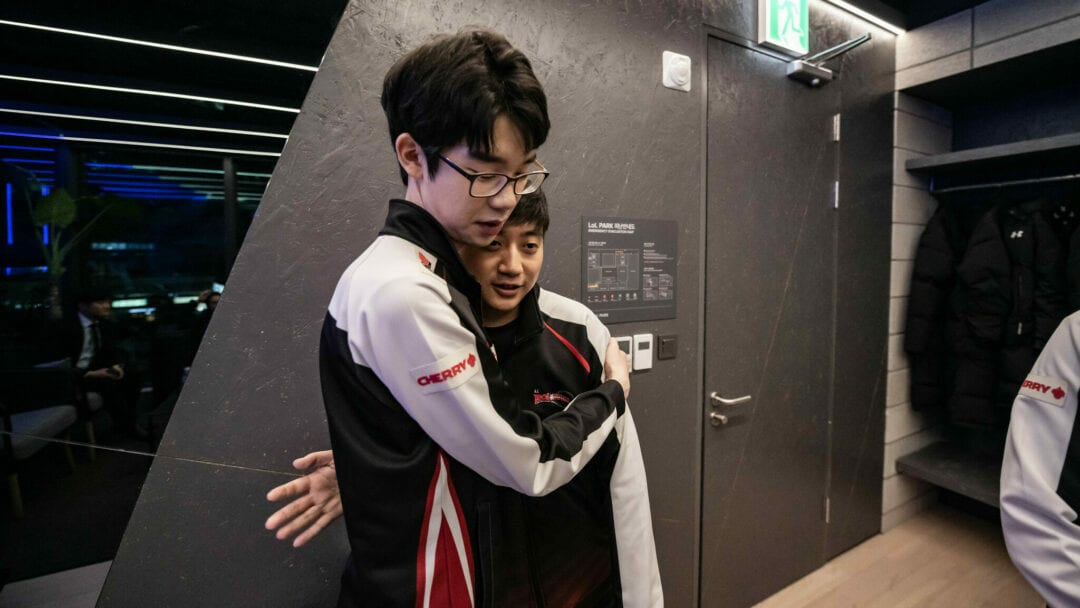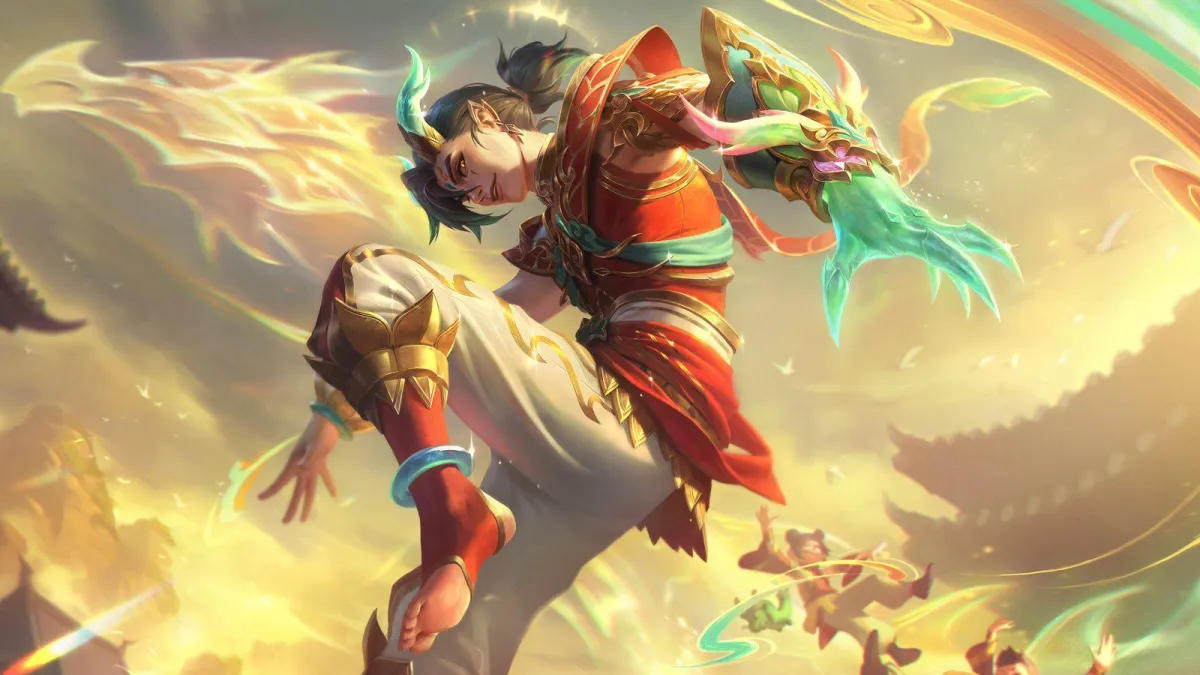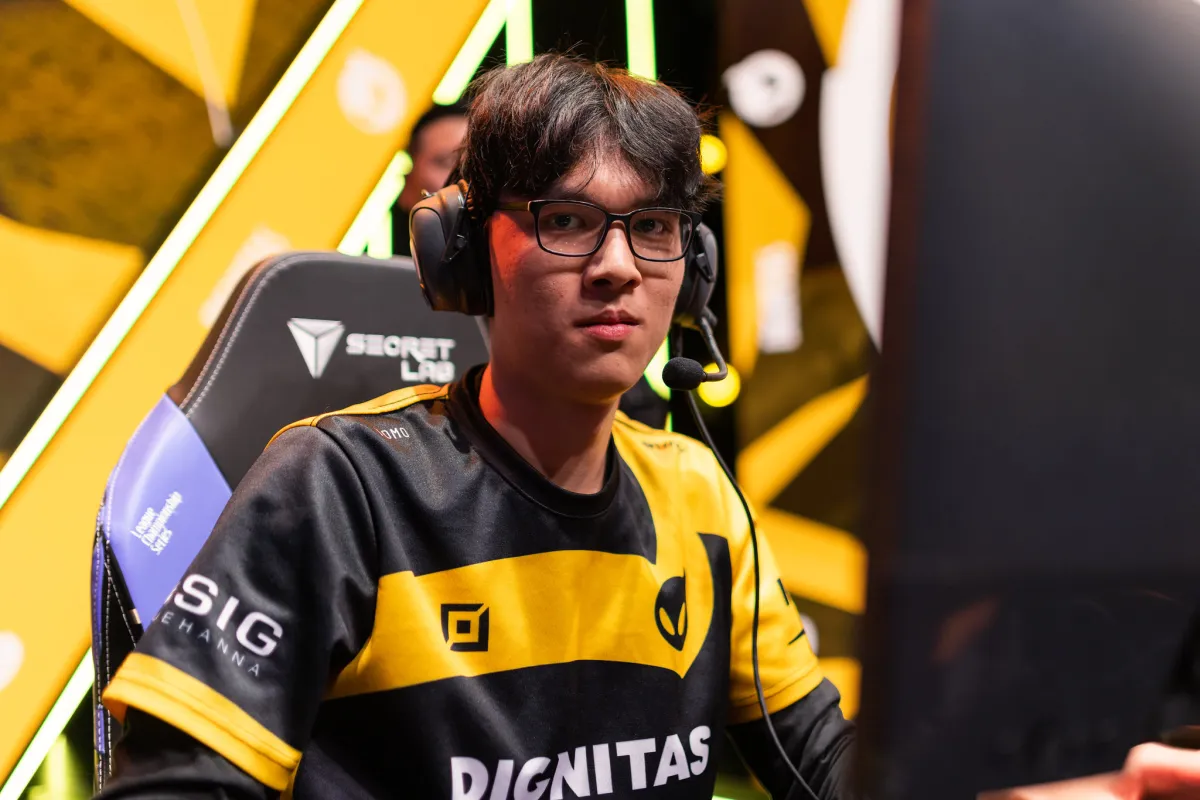Fredit Brion jungler Um “UmTi” Sung-hyeon debuted on January 2017, playing Lee Sin for Jin Air Green Wings, an esports organization that no longer exists. He has played in more than 200 LCK games since then, and 2021 is his fifth year of professional play.
Yet, until this spring, he was hardly ever called a veteran player.
When UmTi first broke onto the scene, he received high praise for his unorthodox early-game pathing choices, willingness to go for the risky play and decent-to-great mechanics. On the flip side, some criticized his overreliance on pre-planned openings, ridiculously greedy counter-jungling attempts and poor late-game decision-making. The critics overwhelmed the supporters more often than not.
He shouldered most of the blame for Jin Air’s underwhelming performance and was eventually lumped alongside other struggling rookie junglers (Lee “Crash” Dong-woo, Son “Punch” Min-hyeok, Yoon “SeongHwan” Seong-hwan, and Choi “Bless” Hyeon-Woong) as part of a popular, derogatory meme.
Young junglers are usually expected to mature dramatically with match experience, but time didn’t solve any of UmTi’s problems. Even learning from seasoned teammates like Lee “KaKAO” Byeong-kwon and Go “Score” Dong-bin — some of the best to have ever played the game — didn’t seem to have much of an effect. Regular glimpses of genuine talent were always marred by more frequent displays of unacceptable inconsistency.
For the first four years of UmTi’s career, during which he had to claw out of relegations twice and spend an entire year in Challengers Korea, no lasting improvement manifested. It almost felt as if he might never even develop as a player, let alone live up to his promise.
Why do we climb?
In 2018, Cathy Yang wrote “13 Ways of Looking at Success,” a seminal feature on the struggles and hopes of LCS’s middling players — those who had long endeavored to carve out a meaningful legacy for themselves in the league but had yet to realize their dreams. The article revolves around the stories of specific players in North America, but the question posed is universal: Why are these players still willing to give so much to a cause so cruel and unrewarding while already knowing they could give everything they ever had and still never get anything back?
“Keith’s 1-17 record on Echo Fox will never show how much Yuri Jew has grown, or the drive he still feels to be number one,” Yang wrote. “Goldenglue’s KDA will never reflect all the soul-searching and stress and punishing spotlights Greyson Gilmer has endured, only to emerge a stronger, more confident person and player.”
The piece’s central metaphor is professional play as mountain climbing. It’s fitting in more ways than one. Everyone aims to reach a peak (just not the same one), different people take different routes, many climbs are fraught with setbacks and sometimes things just don’t work out. Perhaps the most relevant similarity is that for non-superstar hikers, there’s never really a logical reason to keep scaling a mountain that willfully rejects them. And yet, some stubbornly stay the course. Why?
No definitive answer is given, probably because there isn’t one.
“But still, they were there. And still, they keep climbing.
And maybe at the end, they’ll look pretty cool.” – 13 Ways of Looking at Success
Nothing left to lose
UmTi’s triumphant return to the spotlight this year — which has earned him the nickname “commander-in-chief” for solid, self-assured displays as Fredit Brion’s jungler and captain — has caught pretty much the entire scene by surprise. Prior to season kickoff, Brion was considered the lock-in for tenth place, an uninspiring budget squad consisting of unproven rookies and proven failures (as admitted by manager Choi “Edgar” Woo-beom himself, albeit alongside a statement of intent to prove the naysayers wrong). Few expected UmTi to keep up with the competition, let alone play well.
Yet, by somehow unlocking a level of composure he had failed to reach for years, he has finally established himself as a more-than-decent LCK-level player and his team’s centerpiece.
“[UmTi] had always been great at planning out the early game and making smart choices, but from the midgame onwards, he would often make silly decisions that usually ended up as throws,” said Han “H-Dragon” Sang-yong, who signed UmTi in 2016 and mentored him for two years as Jin Air’s head coach. “But he seems to have improved much in that regard and is now playing a key part in Brion’s macro.”
Brion ultimately failed to reach the playoffs this spring, but they’ve repeatedly punched far above their weight, proving themselves to be capable of felling even world class teams on a good day.
This past January, Brion pulled off an inconceivable upset victory against reigning world champions Damwon KIA, with UmTi and Kim “Lava” Tae-hoon in particular running circles around Heo “ShowMaker” Su and Kim “Canyon” Gun-bu. After the game, Brion celebrated in their practice room like they had just won Worlds, crashing into chairs, yelling their lungs out, jumping up and down with joy. In the post-match interview, a flushed UmTi characterized his team as a desperate, ragtag bunch — a squad full of players “who have failed to prove their worth, who have failed to realize their potential, who are still being called ‘used rookies'”.
Wrapping up the interview, he summed up Brion’s drive as follows:
“We want to show the fans what a group of kids with truly nothing to lose can do.”
Can’t come back
In Korea, “used rookie” is an idiomatic oxymoron used in sports, music and entertainment to characterize those well past their debut who were briefly considered promising before quickly falling out of the spotlight but stuck it out and are now returning to public attention, usually due to some kind of auspicious resurgence. The “rookie” label stems from newer or casual spectators typically failing to recognize them.
The connotation and details of the term have long been debated. Is it acceptable to describe a human being as “used” as one would a car? Is the “rookie” an insulting erasure of past experience or a well-meaning affirmation of remaining potential? There isn’t a consensus, and it’s common to see arguments break out in forums due to different interpretations of the phrase.
It’s unclear whether esports produces used rookies at a higher rate than traditional sports. Due to the general fragility of talent development infrastructure (or its non-existence in many regions and titles), as well as the undeniable presence of nepotism (mostly in smaller scenes with tiny top-end player pools), one might argue it’s easier to stick around in esports once someone gets their first shot, particularly if they’re open to taking lowball offers and/or moving regions. But hanging on after the first fall is only half of what constitutes the used-rookie arc. The other half is clawing back and getting noticed again.
Aside from the crème de la crème, very few players in esports work in an environment conducive to bouncing back after a bad year. Playing careers are short, and few can lock in multi-year contracts. Frenzied patch cycles — a part of life for most esports titles — diminish the value of professional experience to the point where in certain aspects it can even be detrimental. Cutting a forgettable player for a replacement off of the ranked ladder is ridiculously easy. The chopping block is always a hair’s breadth away.
Now add in the fact that esports doesn’t even pay that well on the lower end (at least not yet) and consider the hours of commitment required for the job;. As a whole, an esports career is not exactly renowned for promoting physical and mental health and it won’t leave most with translatable skills, unless someone is playing overseas and learning a new language.
Why would someone want to play esports if esports don’t seem conducive to a career?
It’s not that the industry has completely ignored the problem. Twenty years ago, it wasn’t uncommon for wannabe StarCraft: Brood War pros to recklessly drop out of school and move into facilities indistinguishable from illegal sweatshops. Many never received a salary and often paid out of their own pocket for food and amenities.
Now, at least in the top leagues of the top games, the esports industry at least tries to resemble a sane career choice, with even academy players given access to institutionalized support and compensation. So, some things have changed.
Yet, some things have stayed the same. Many promising players who fail to reach the top level in their first few years quietly leave esports. Those who choose to stay mostly fail to recover their shine.
Without comeback mechanics, it’s hard to make comebacks.
The power of perseverance

UmTi, more so due to its unorthodox capitalization, looks like it stands for something — Umlauts and tildes? Umpteenth time? — but it isn’t an acronym. In old Korean, means “primary hill.” It’s also the made-up name of a sea turtle monster in MapleStory, one of Korea’s oldest and most popular MMORPGs.
Umti is green, slightly smug-looking, spits poison, moves much quicker than it looks and is a notorious prankster. Whether the 2D turtle’s name came from the old word is unknown. Trivia and etymology aside, though, it’s easy to see why Um Sung-hyeon’s childhood nickname was Umti. Um isn’t the most common of family names, and MapleStory was huge when he was in school.
One might be tempted to reference the Tortoise and the Hare fable and commend UmTi for his zeal and perseverance, plodding onward for years at his own pace despite the external ridicule. Yet, it would be a misleading comparison, for it would imply tortoises could actually outrun hares, and that hard work always pays off.
It doesn’t — not in esports. If it did, Kim “Roach” Kang-hee would probably now be the best top laner in the LCK, not the best top laner in Challengers Korea.
Still, UmTi credits persistence as the primary factor for his belated resurgence. While he said his goal during his first stint with Jin Air was to simply survive, spending years working on his game has helped him understand League of Legends at a higher level.
“I think the [breakthrough] happened mainly because I always kept my head straight and stayed diligent, thanks to the mental guidance of the coaches I’ve worked with until now,” UmTi said. “You can’t work on something for five straight years and get worse at it, right? It’s just like studying.”
A reasonable cynic might argue that even if UmTi continues to perform (and perhaps even further improve in the coming years), it remains rather difficult to imagine him lifting a major trophy before he retires. It’s unclear whether he’ll ever get to achieve even the most reasonable dream of his career, one that he put into immutable writing at a sushi restaurant four years ago: qualifying for Worlds. UmTi might look irreplaceable on Brion now, but it would be disingenuous to pretend that his current status has nothing to do with his team being a non-contender.
That being said, UmTi’s belief in himself has never faltered. He has stubbornly stayed the course. He has always kept climbing, no matter how often he slipped.
“If I didn’t think I could one day realize my dreams, I would have already retired,” he said. “I know hard work in itself isn’t enough. What matters is achieving good results through that work. But I believe I can make it happen. I wouldn’t have chosen this job in the first place if I thought I’d always be mediocre.”
Qualifying for international play is tough no matter the region. Nevertheless, he does seem to have conclusively managed to outrun the brutal quicksand of time that clutched at his heels for so long — the bane of so many pros around the world who shone, then dipped, then disappeared.
For four years, esports didn’t seem to want him. Now it wants him back.
One tortoise has somehow managed to stay ahead of Achilles. Maybe it could outrun some hares, too.







